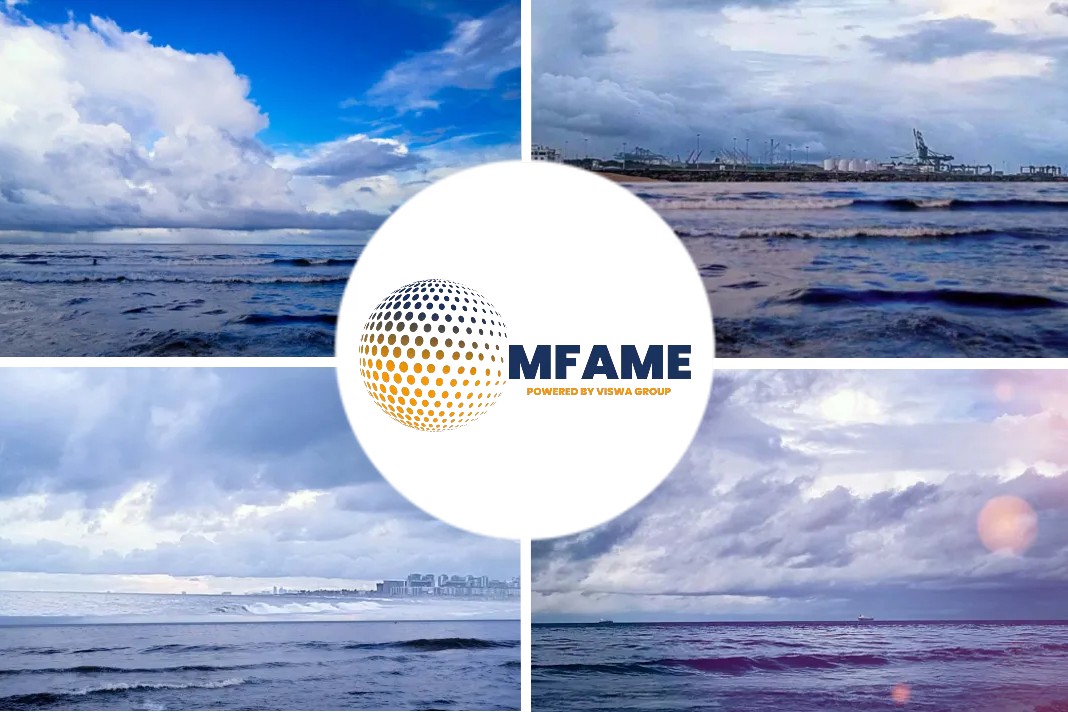According to a Ship Insight report, Stein Kjølberg, the Global Concept Director for hull performance solutions at the Norwegian paint company Jotun has been quoted as saying that fitting a scrubber for just six months could make economic sense but the assumptions behind that forecast may be less secure than what it seems.
What is it?
He made his prediction during a ShipInsight webinar last week (11 December) called ‘Antifouling, efficiency and IMO 2020: Making the connection’ during which he drew parallels between those three performance-related topics.

Lesser Scrubber Payback Time
He estimated that 5-7% of the global merchant fleet will install scrubbers, representing about 20% of total tonnage because of the large size of many ships that chosen that technology to comply with IMO’s 2020 sulphur cap.
Based on a price differential of $200-300/tonne between 380cSt HFO and low-sulphur fuel, the payback time on many larger vessels would be “less than 12 months, and in some cases down to six months,” he said.
Scrubber As An Interim Measure
During the Q&A at the end of the webinar, he said that, on that basis, some operators could install scrubbers as an interim measure and decide later whether to keep them in use or remove them and switch to compliant fuel. But one webinar attendee suggested that, if payback was so quick, “it’s a no brainer that all ships will install them” and asked why that was not happening.
That is because “a lot of owners now realise” that the actual price differential may not be as wide as many had assumed, Mr Kjølberg said, which would make the economics less attractive. “Even now, if I ask in the market what the price of compliant fuel [will be] from next year [there is] no clear answer,” he added.
In addition, because a number of ports are prohibiting discharges from open loop scrubbers, many scrubber users may have to switch to compliant fuel or upgrade to more expensive closed-loop or hybrid units, he said.
Agreeing on the Correct Course
It may seem odd that a paint company executive should express a view on scrubbers, but his theme was that there is a connection across a number of technologies. He underlined the point in his opening remarks: “Few in the industry would disagree that making shipping more sustainable is an issue that needs to be further addressed, but finding agreement on the right course of action is less straightforward,” he said.
Then there are the regulatory challenges: as well as the sulphur cap, he listed EEDI, IMO and European GHG emissions goals, the EU’s monitoring, reporting and verification of CO₂ emissions, IMO’s data collection system for fuel consumption and biofouling management regulations, which are already in place in California and under discussion at IMO.
Fuel Efficiency, The Top Priority
Above everything, however, “maximising fuel efficiency will be the owners’ top priority,” he said. And that is what links all his themes, because minimising fuel consumption is directly linked to ship performance and hull coatings play an obvious part in that.
It was the coatings industry that initiated the ISO 19030 standard for measuring changes in hull and propeller performance. It is not perfect, Mr Kjølberg said during the webinar, “but it is good enough for its purpose.”
Indicators To Make the Right Choice
He outlined the standard’s four performance indicators, which he said will help owners make the right choice of antifouling systems suited to the needs of their specific vessels and trades. And “the right choice does not necessarily mean the most expensive,” he stressed.
The shipping industry “is slowly moving towards better antifouling systems,” he said, because “more owners and operators have started to use performance monitoring to a greater degree and now they start to see the benefits.”
But others have been slower to follow suit, because “data sources are often widespread and difficult to analyse,” he said. Another factor holding some owners back is their belief that “getting value out of the information is expensive and complex to do themselves.” There are also no financial incentives to invest in performance-improving technologies, he said.
Discounts on Incentives
Asked who should pay for any incentives, he suggested that there could be discounts on such things as harbour fees and port dues, paid for by additional fees levied on operators that have not adopted efficiency measures.
Banks could also support better performance, he suggested, by encouraging investments into suitable initiatives and by asking shipowners about their efficiency figures when assessing loan applications, possibly even refusing finance unless owners demonstrate they are taking efficiency initiatives. He said that initial discussions had been held with banks about how they could support the shipping industry using performance monitoring in general, but added that their response was not encouraging. “They found it interesting,” he said but they viewed the sums involved, even in an advanced antifouling system or performance monitoring system, as small in comparison with the value of the ship.
As a result, banks “did not have that kind of interest in the total project” but he was encouraged by the support given by 11 leading banks to the Poseidon Principles which have been developed to promote greener global shipping. But “the question remains, what do the signatories get out of this in financial terms and what is the foundation for the measurement of carbon intensity?” he said.
Investors To Support Better Performance
Speaking to ShipInsight after the webinar, he suggested that “banks and financial institutions could also support better performance by offering better deals, lower interest rates or more attractive packages to those owners willing to invest in more energy efficient ships.”
Concluding his remarks, he advised his listeners to “use performance monitoring as an active tool. Start to get to grips with what you have on board and then develop further.”
Did you subscribe to our daily newsletter?
It’s Free! Click here to Subscribe!
Source: Ship Insight



















